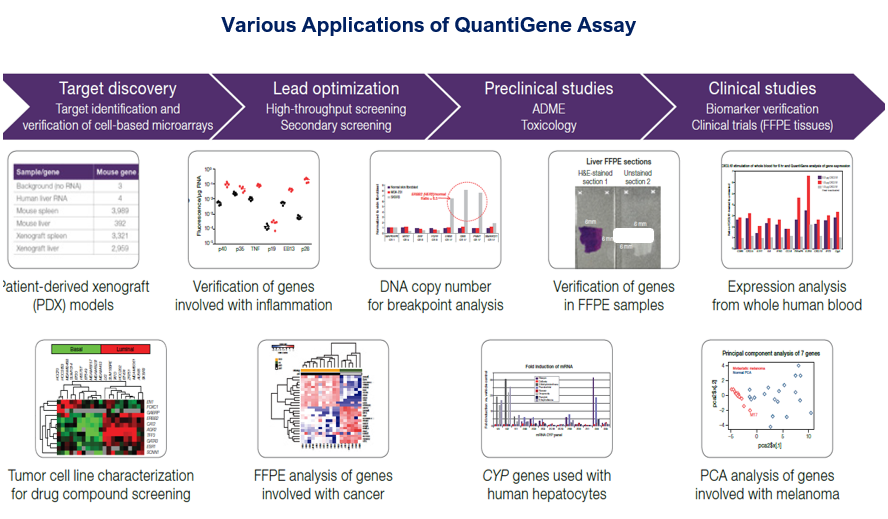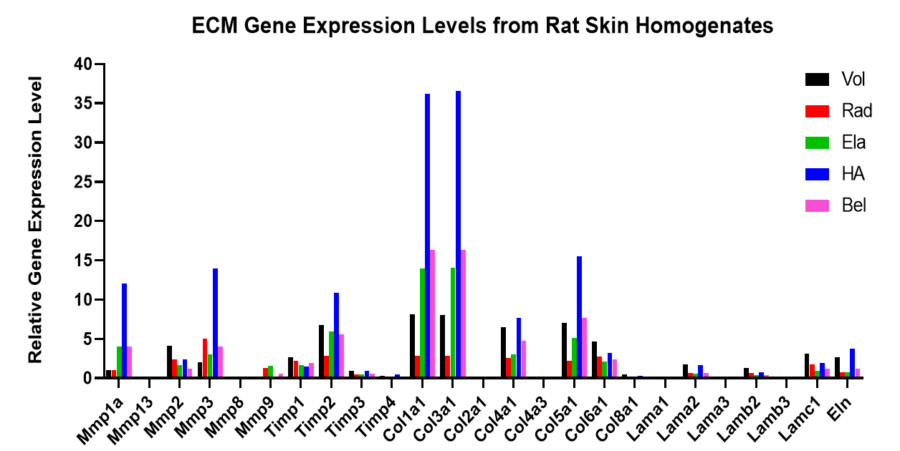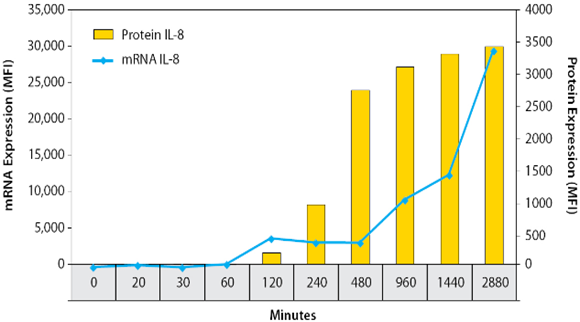QuantiGene™ Assay
The QuantiGene Assay is a hybridization-based technology for direct RNA and DNA quantification without reverse transcription or PCR. It enables multiplex detection of up to 80 genes in a single well, delivering accurate and reproducible results even from challenging samples like FFPE tissues and degraded RNA. With fast turnaround and customizable panels, QuantiGene is a cost-effective solution for gene expression and biomarker studies.
How It Works
QuantiGene assays utilize branched DNA (bDNA) technology, a method approved in diagnostic assays for HIV-1 and other diseases. In this process, cells or tissue samples are homogenized to release target RNA, which is then captured on a plate using specific oligonucleotide probe sets. The probes hybridize cooperatively to the RNA, and capture probes bind the complexes to beads for detection. Signal amplification is achieved through sequential hybridization of bDNA pre-amplifiers, amplifiers, and label-probes, dramatically increasing sensitivity without PCR. The resulting fluorescence signal is measured on a Luminex flow cytometer, providing accurate and reproducible quantification of gene expression.
Strength & Sample Requirements
The QuantiGene assay offers a powerful and flexible solution for gene expression analysis, designed to work with even the most limited and challenging samples. Only a few cells or a small piece of tissue are needed, and RNA purification is optional, making the workflow both fast and efficient. The assay is compatible with a wide range of sample types, including cultured cells, whole blood, dried blood spots, fresh or frozen animal and plant tissues, purified RNA, and even heavily degraded RNA from FFPE tissues.
With its high specificity and sensitivity, QuantiGene can detect subtle gene expression changes of less than 10% and distinguish between closely related genes through its unique probe design. The platform supports true multiplexing, enabling the measurement of up to 80 genes—including housekeeping genes for normalization—in a single well with no cross-reactivity. Using a standardized 96-well format with Luminex assay systems, the workflow resembles a straightforward ELISA, allowing direct hybridization and labeling of transcripts to beads.
Additional advantages include flexibility for automation in routine screening, a reliable normalization strategy with multiple housekeeping genes, and robust performance across diverse applications. These features make QuantiGene an ideal tool for rapid, reproducible, and scalable gene expression profiling.

The QuantiGene Assay is a versatile platform applied across the entire research and development pipeline, from early discovery to clinical validation. In target discovery, it enables patient-derived xenograft (PDX) modeling, tumor cell line characterization, and identification of gene signatures in disease models. For lead optimization, it supports high-throughput screening and verification of genes linked to inflammation, cancer, and DNA copy number variation.
In preclinical studies, QuantiGene is widely used for toxicology and ADME applications, including CYP gene analysis in hepatocytes and reliable detection of transcripts in FFPE tissues. Finally, in clinical studies, the assay provides robust biomarker verification and expression analysis in whole blood and archived FFPE samples, making it suitable for translational research and clinical trial support.


ECM Gene Expression Levels from Rat Skin Homogenates
This bar chart shows relative expression levels of extracellular matrix (ECM) genes across rat skin homogenates under different conditions (Vol, Rad, Ela, HA, Bel). The data demonstrate differential gene regulation across multiple ECM-related targets, highlighting genes with significantly higher expression under specific treatments.
mRNA and Protein IL-8 Expression Over Time
This dual-axis plot illustrates the correlation between IL-8 mRNA and protein expression over time. mRNA expression (blue line) and protein secretion (yellow bars) show a time-dependent increase, with delayed protein accumulation following transcriptional activation, reflecting dynamic gene-to-protein regulation.
When to Choose Multiplex QuantiGene Assay over qPCR
The Multiplex QuantiGene Assay is most suitable when studies demand greater efficiency and speed than qPCR. Unlike qPCR, QuantiGene requires no RNA purification or cDNA synthesis, working directly from cells or tissue lysates to minimize bias and reduce contamination risks. It is particularly valuable for complex samples such as FFPE tissues, whole blood, dried blood spots, and degraded RNA, where qPCR performance is often limited.
For projects requiring high-throughput analysis, QuantiGene enables the simultaneous measurement of up to 80 genes in a single well without cross-reactivity, providing a clear advantage over qPCR’s restricted throughput. It also supports the combined detection of gene and protein expression within the same workflow, making it ideal when dual-level analysis is needed.
With its large library of validated gene panels, QuantiGene shortens setup time and avoids the extensive primer optimization required by qPCR, ensuring faster turnaround and reliable results. This makes it a cost-effective solution for studies with many targets per sample and the preferred choice when timelines are tight or comprehensive profiling is required.
Have questions? Ask Axela — we’re here to help.
📧 info@axelabio.com